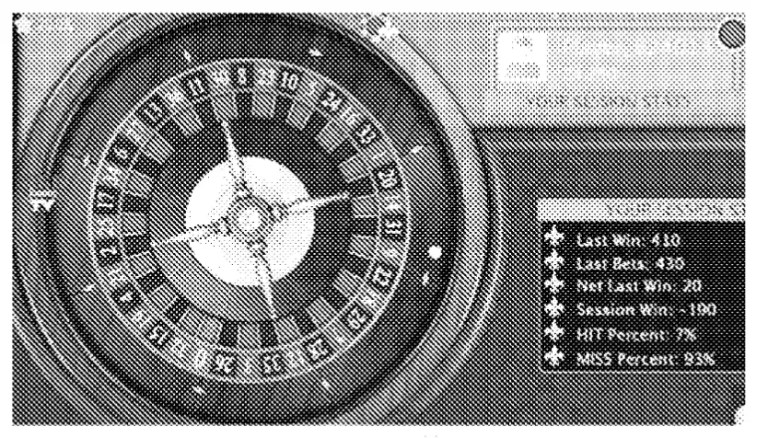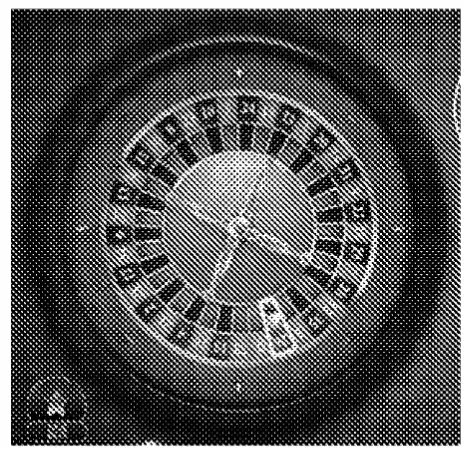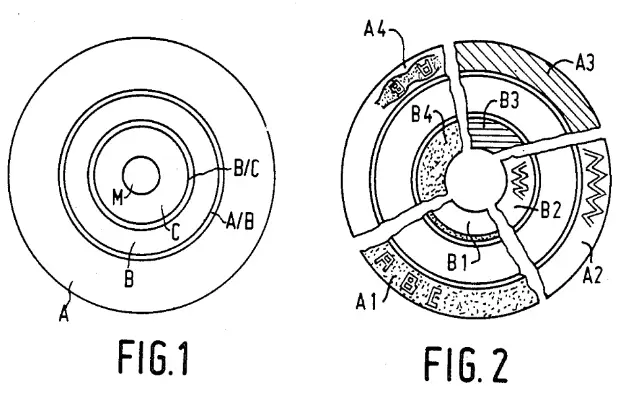Teaching Away Update – Roulette Game
In App. No. 29/842,266 (Display Screen with Graphical User Interface of a Roulette Game with a Contrasting Sector Highlighting Effect) (now US Design Patent D1,039,547 – issued August 20, 2024), Applicant filed a single design figure, as follows:

The examiner rejected the claimed design as obvious over putative primary prior art reference 360Gaming in light of secondary reference SoftGamings. The examiner argued it would have been obvious to a designer of ordinary to modify the primary reference 360Gaming design by designing an elongated trapezoid that can be placed on top of one of the inner segments of the large circle, as taught by secondary reference SoftGamings.


The applicant disagreed, arguing that (1) the primary reference was not basically the same as the claimed design and (2) the secondary reference could not be combined with the putative primary reference because it effectively taught away from the claimed design.
The primary reference analysis was performed under the old “basically the same” standard from In re Rosen, 673 F.2d 388 (CCPA 1982). Ultimately, the examiner agreed that given the differences in the claimed design and the 360Gaming reference, the designs were not basically the same, and the obviousness rejection was withdrawn.
What if the analysis had been done under the new standard announced in LKQ Corporation v. GM Global Technology Operations LLC, 102 F.4th 1280 (Fed. Cir. 2024) where the primary reference need not be basically the same as the claimed design? The 360Gaming reference likely would qualify as a primary reference, and then the question would be whether the SoftGamings secondary reference could be combined with the primary reference to render the claimed design obvious.
What might some potential arguments be both pro and con? The examiner could argue that since the primary and secondary references both involved roulette wheels, the references are visually similar enough to be combined under the LKQ standard. In LKQ, the Court provided a non-exclusive list of factors to consider regarding motivation to combine including (1) what market demands and industry customs exist in the relevant field, (2) an ordinarily skilled designer’s experience and creativity, and (3) ornamental features that are commonplace in the relevant field. Id. at 1299, 1300. Other factors, such as (4) an express or implied statement of a suggestion to combine in the prior art and (5) similarity in overall appearance of the primary and secondary references, existed prior to LKQ. These traditional factors were not eliminated by LKQ, but only held not to be required.
The applicant then might respond that since the secondary reference only had one highlighted elongated trapezoid, the references, even when combined, failed to teach the claimed design. See MPEP 1504.03 (II) (“[t]o establish prima facie obviousness, all the claim limitations must be taught or suggested by the prior art.”).
The examiner then might reply by arguing that a mere change in the number of design features is an obvious expedient and does not constitute a patentable distinction. This is an argument sometimes used by examiners at the patent office. See, e.g., App. No. 29/842, 225 (“Duplication and/or subtraction of parts is a well-known design expedient and cannot be the basis for patentability of a design, Olsen v. Baby World Co. Inc. et al., 126 F. Supp. 660, 104 USPQ 51 (D.C. E.N.Y. 1954).”); App. No. 29/773,956 (“The mere duplication or subtraction of parts does not patentably distinguish one design from another.”); App. No. 29/686,787 (“duplication of parts and subtraction of repeating sections does not make a patentably distinct design”); App. No. 29/772,880 (a simple change in number or arrangement that is well within the capacity of an ordinary designer of skill is considered to be an obvious expedient in design).
To respond to this argument, the applicant could reassert its teaching away argument that the SoftGamings secondary reference teaches away from the claimed design for functional reasons. Applicant’s “teaching away” argument was as follows during prosecution:
“SoftGamings discloses a single emphasized sector shown with a ball in the inner sector pocket of the roulette game. As is evident in the SoftGamings video reference, when the virtual ball lands in a virtual slot during the roulette game, an emphasis occurs on the sector where the ball lands, and only occurs in that particular sector. This emphasis is visually different from any highlighting effect shown in the claimed design. SoftGamings thus only has a single sector illuminated or otherwise accentuated and teaches away from the five consecutive emphasized sectors in the claimed design.
“There is no reason offered by the rejection for presuming that a virtual ball would appear in five adjacent sectors at once during a roulette game. Thus, the single sector emphasis introduced by SoftGamings actively teaches away from 360Gaming remotely resembling the final claimed design. See, e.g., MPEP 1504.03(111)(“[a] reference may be said to teach away when a person of ordinary skill, upon reading the reference … would be led in a direction divergent from the path that was taken by the applicant”) (quoting In re Haruna, 58 USPQ2d 1517 (Fed. Cir. 2001)), and MPEP 1504.03(11)(“If the proposed combination of the references so alters the primary reference that its broad function can no longer be carried out, the combination of the prior art would not have been obvious to a designer of ordinary skill in the art.”).”
This is an effective argument and likely would prevail. Although design patents are concerned with appearance, functional considerations come into play on certain issues, including the concept of teaching away. This is supported by the In re Haruna case, cited by Applicant. In Haruna, the claimed design was for a pre-recorded disk having a metallized region that stopped well short of the outer rim, which created a wide transparent outer region.

An obviousness rejection issued based on U.S. Utility Patent No. 4,747,093 (Benne) that describes disks with outer zones having various surface treatments intended to conceal defects in the disc.

The Board upheld the rejection, reasoning that the claimed design’s transparent outer region did not impart patentability because a mere change in color alone (including transparency) does not confer patentability (citing In re Cohn, 80 F.2d 65 (CCPA 1935) and In re Iknayan, 274 F.2d 943 (CCPA 1960)). The Board concluded that the transparent region in Haruna’s design did not differ sufficiently from the Benne non-transparent outer region.
The Court reversed the Board’s decision and determined that the Benne prior art reference, which emphasizes concealing defects in the outer zone with various surface treatments, discourages and teaches away from creating a design with a wide transparent outer region. The Court explained that Benne achieves its objective by treating the surface of the outer zone with a matte finish, colored surface, pattern, or combination thereof. The Court held that this teaches away from transparency and renders Haruna’s design non-obvious.

